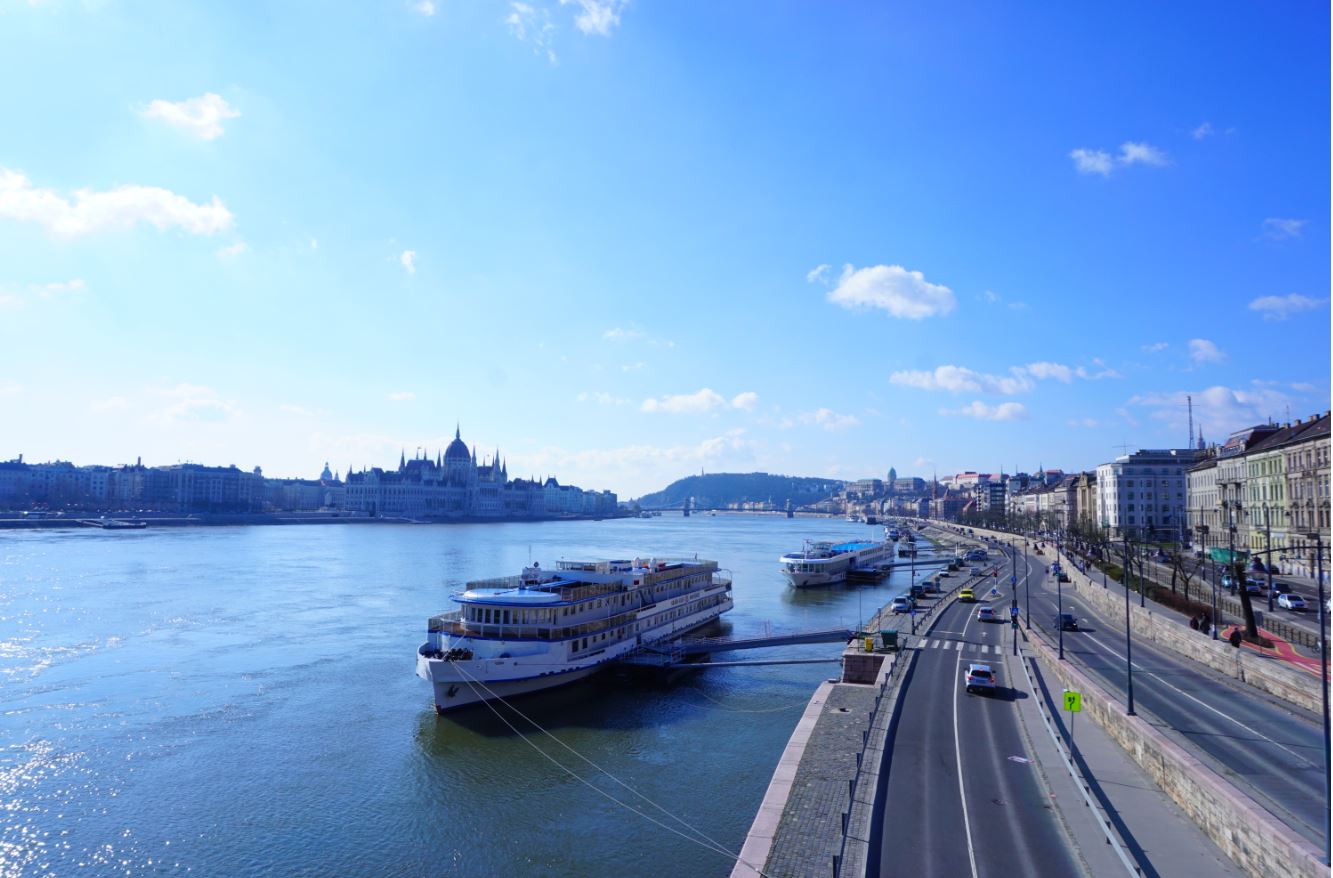 Danube River
Danube River
Budapest was the first city I visited on this spring trip. What made me interested in coming here is its affordability compared to Stockholm and the many hot baths offered by the city; it’s no wonder Budapest is called the “City of Spas.” Interestingly, despite the absence of volcanic activity around Budapest like volcanoes, the city has many thermal springs that have been utilized by the Romans since the 1st century.
Besides the thermal baths, Budapest also offers various interesting tourist attractions that are a must-visit. Moreover, Budapest’s atmosphere at night is very beautiful if you are a photography enthusiast.
This article will discuss the areas in Budapest that must be visited, as well as the main attractions in those areas. When visiting these areas, you’ll come across several monuments and tourist attractions that can be reached on foot, so it’s highly recommended to take a walking tour. One of the walking tours that can be followed is available on the bigboytravel website.
1. Buda Area
Attractions in this area:
- Széchenyi Chain Bridge
- Buda Royal Palace
- Matthias Church
- Fisherman Bastion
The city of Budapest itself consists of two main regions, Buda and Pest, separated by the Danube River. The Buda region is concentrated on tourist attractions related to Buda Castle, and its distinctive feature is the elevated position of its buildings.
Széchenyi Chain Bridge
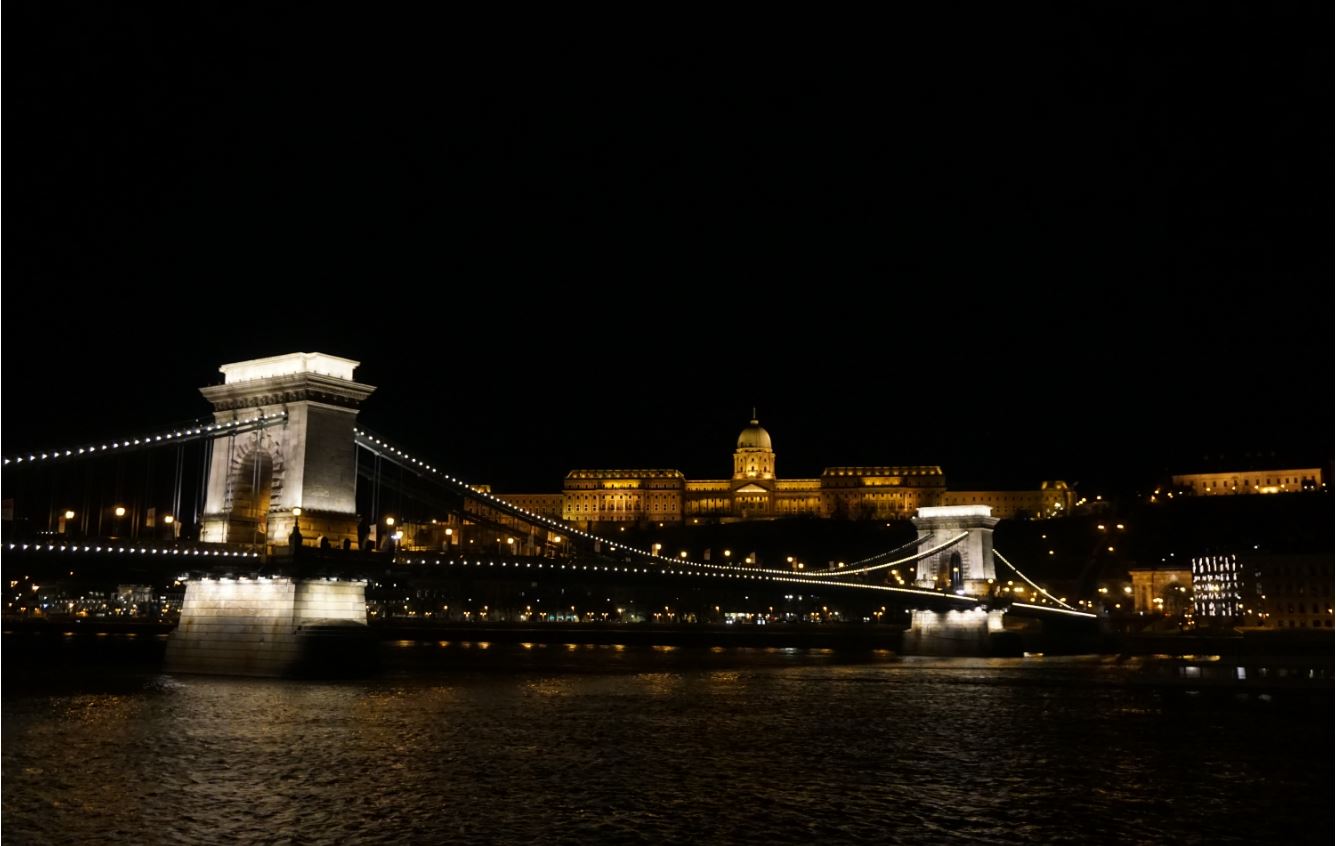 Széchenyi Chain Bridge and Buda Royal Palace
Széchenyi Chain Bridge and Buda Royal Palace
When crossing from the Pest area to Buda, you’ll pass one of the first bridges connecting these two areas in 1849, which is the Széchenyi Chain Bridge. The lion statues are the hallmark of this bridge; you know you’ve crossed it when you see those lion statues. At night, this bridge becomes the most dazzling among others due to the adorned lights.
Buda Royal Palace
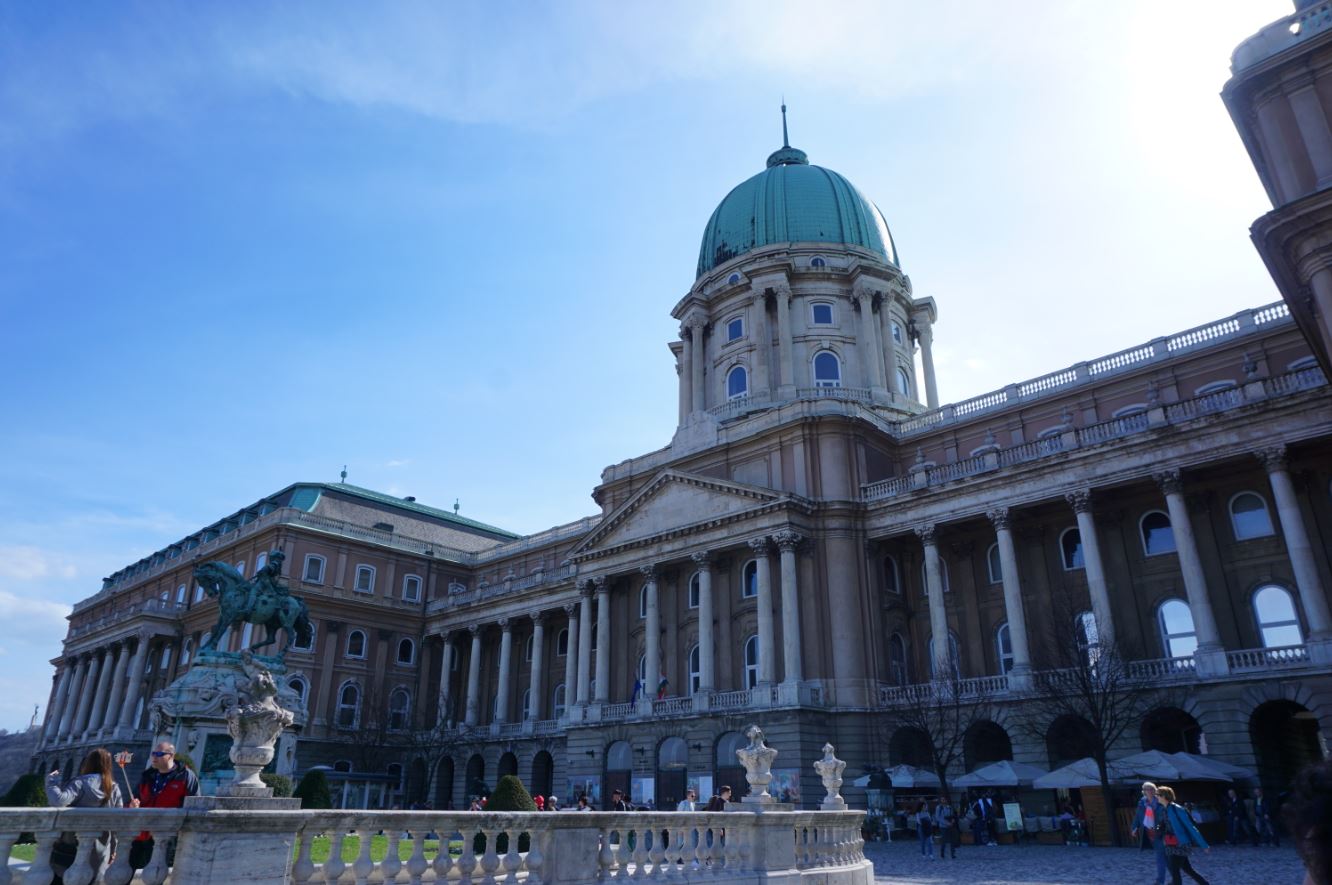 Buda Royal Palace
Buda Royal Palace
At the top of the hill, you’ll find the Buda Royal Palace. You can take a funicular to reach the top of the hill, but because we were very enthusiastic, we chose to climb the stairs (budget-friendly) to get to the top. Buda Royal Palace is part of the Castle District, which is a UNESCO World Heritage Site. Buda Royal Palace has a tumultuous history; it has been a residence for various kingdoms such as the Ottoman Empire and the Austrian Empire, and it was once destroyed during World War II. Nowadays, the castle building is used as the Hungarian National Gallery and the Budapest History Museum.
Matthias Church
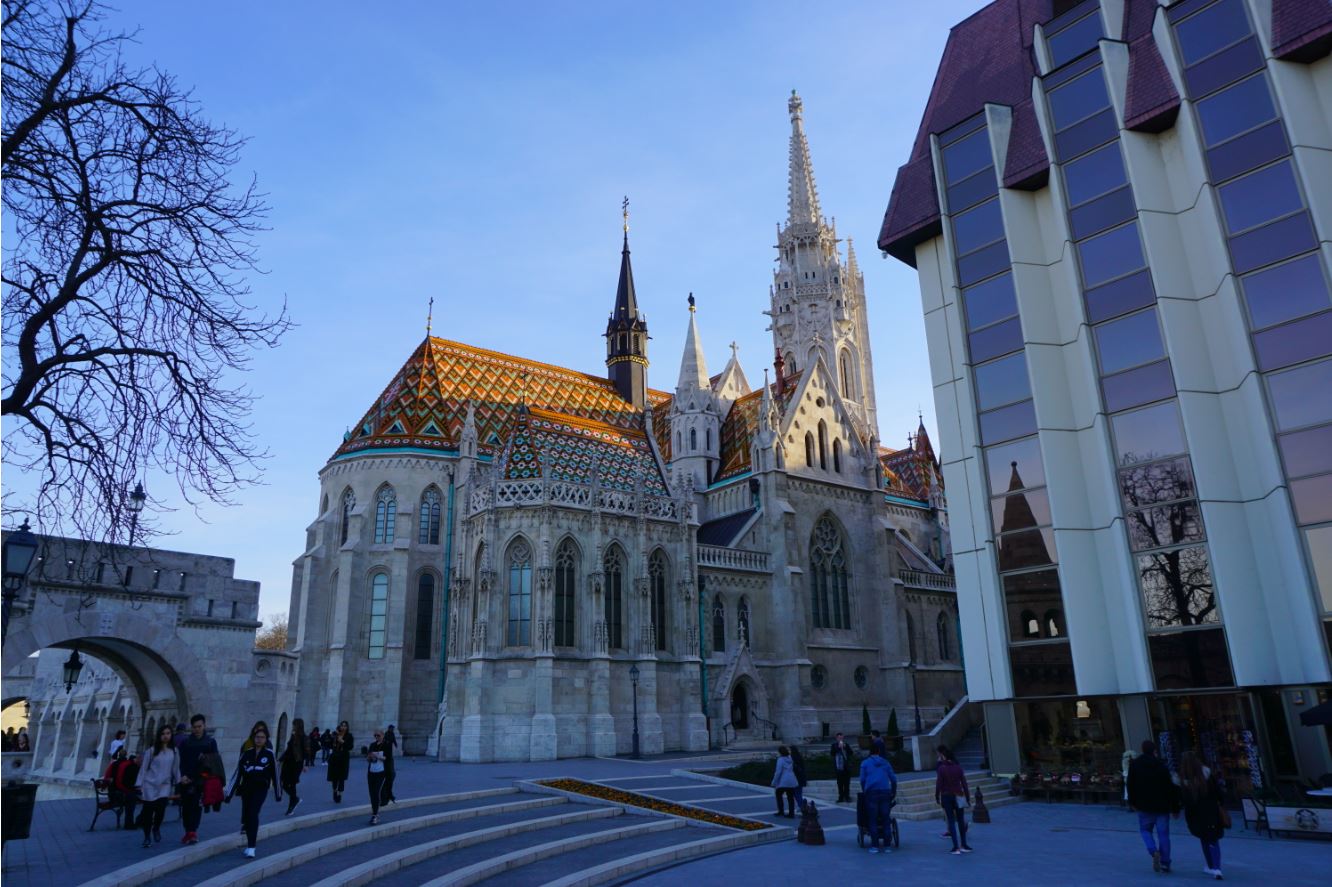 Matthias Church
Matthias Church
In addition to the Buda Royal Palace, the Castle District also offers other historical buildings, one of which is the Matthias Church. Located in the heart of the Castle District, this church has been built since 1015 and was once destroyed by the Mongol invasion in 1242. It was even converted into a mosque when Budapest was ruled by the Ottoman Empire for 150 years, and it was turned back into a church after being recaptured by Pope Innocent XI in 1686. With its rich history, it’s worth visiting the grandeur offered by Matthias Church.
Fisherman Bastion
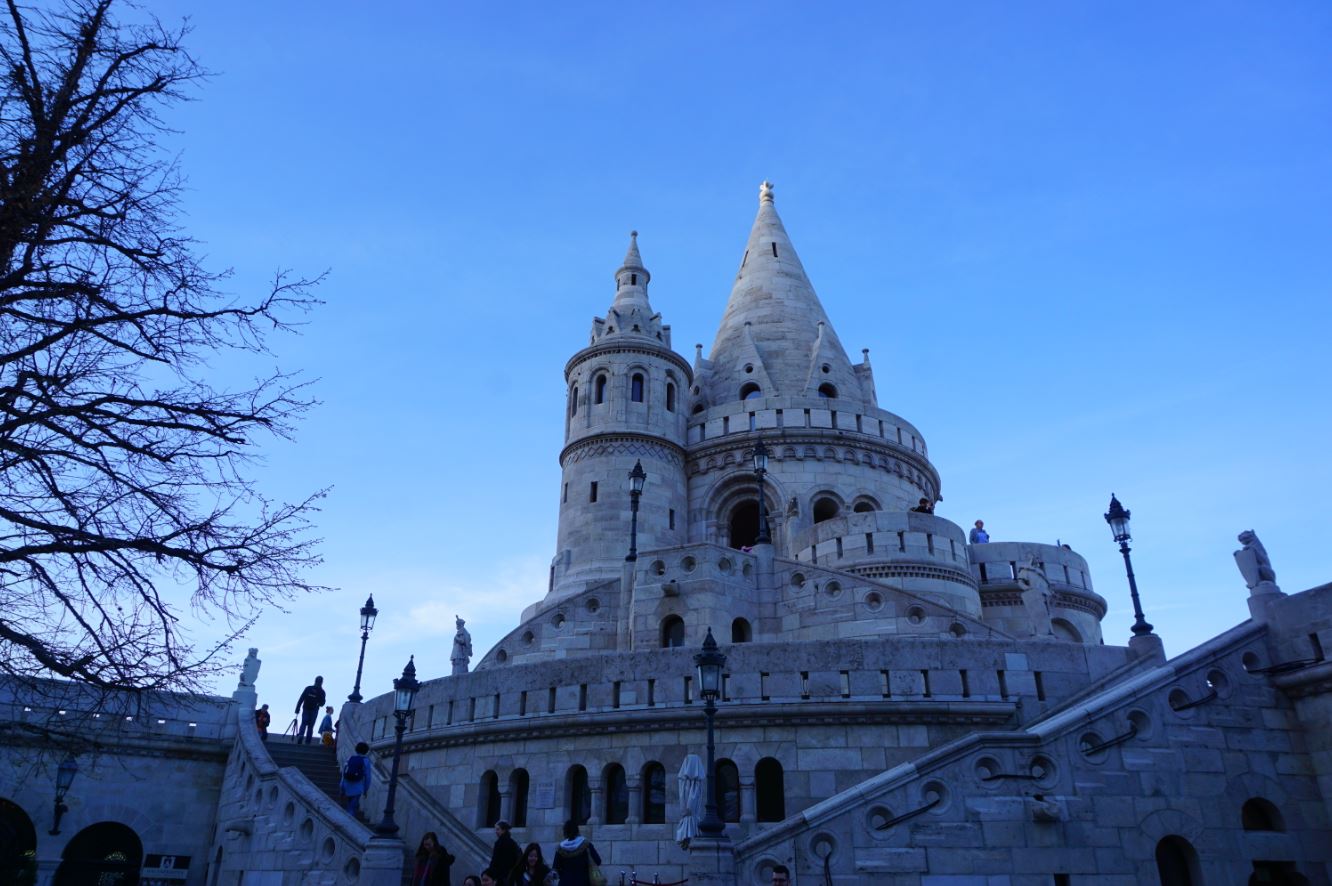 Fisherman Bastion
Fisherman Bastion
Near Matthias Church, there’s a unique towered building known as Fisherman Bastion. Fisherman Bastion is one of the unique landmarks of Budapest. This place is named after the fishermen’s guild, which was responsible for defending this area in ancient times. Apart from its history, this place is always busy due to the view it offers, overlooking the Danube River and the Pest area from a high vantage point.
2. Pest Area
Attractions in this area:
- Hungarian Parliament Building
- Saint Stephen’s Basilica
- Freedom Square
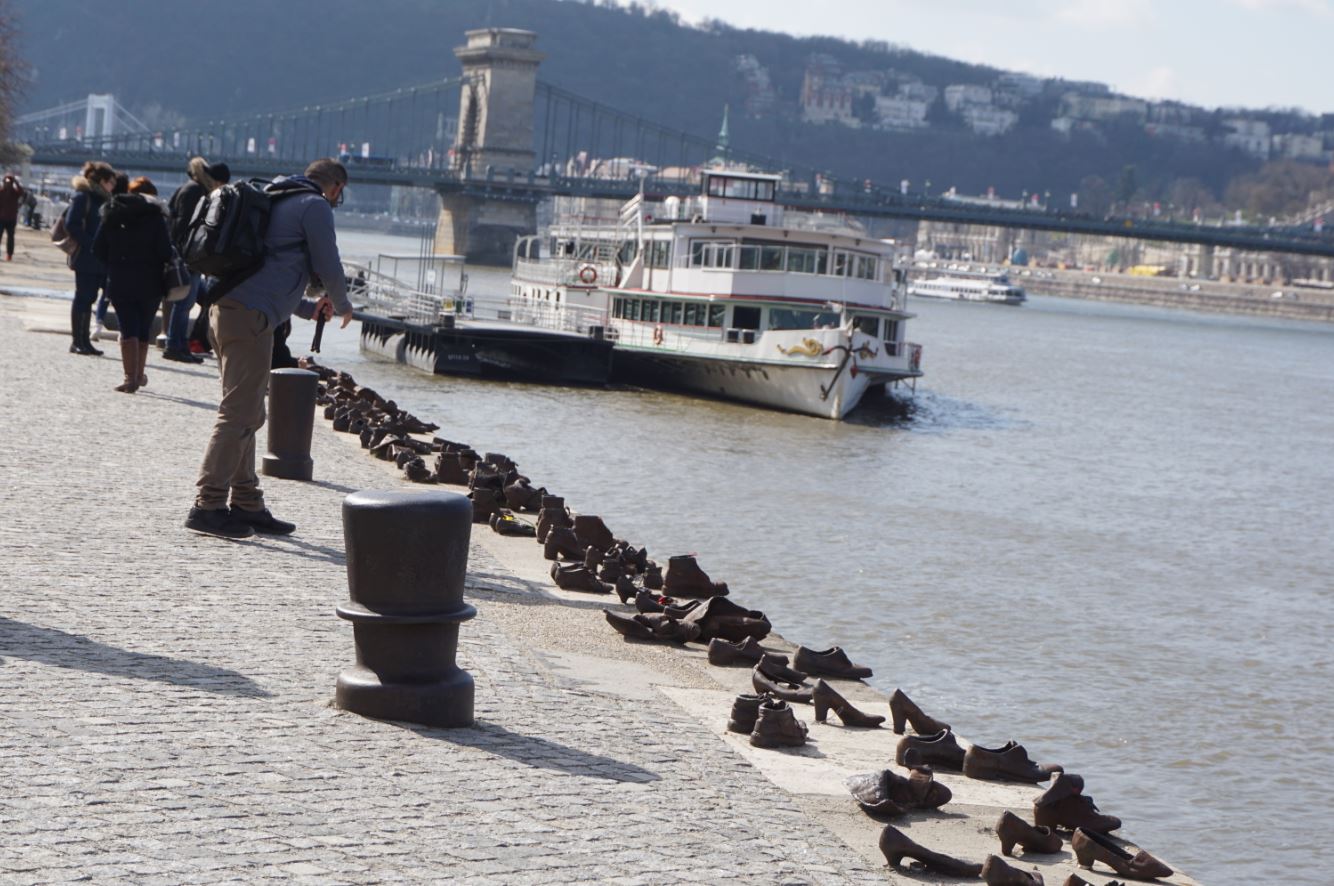 Holocaust Shoe Memorial
Holocaust Shoe Memorial
This time, we move to the Pest area. Prepare your walking shoes because this time we’ll be exploring historical places in the area, and you’ll walk quite a distance. In this area, you’ll come across numerous statues commemorating Hungarian and Budapest history. One of the famous ones is the Holocaust Shoe Memorial, located near the Parliament Building, along the banks of the Danube River.
Hungarian Parliament Building
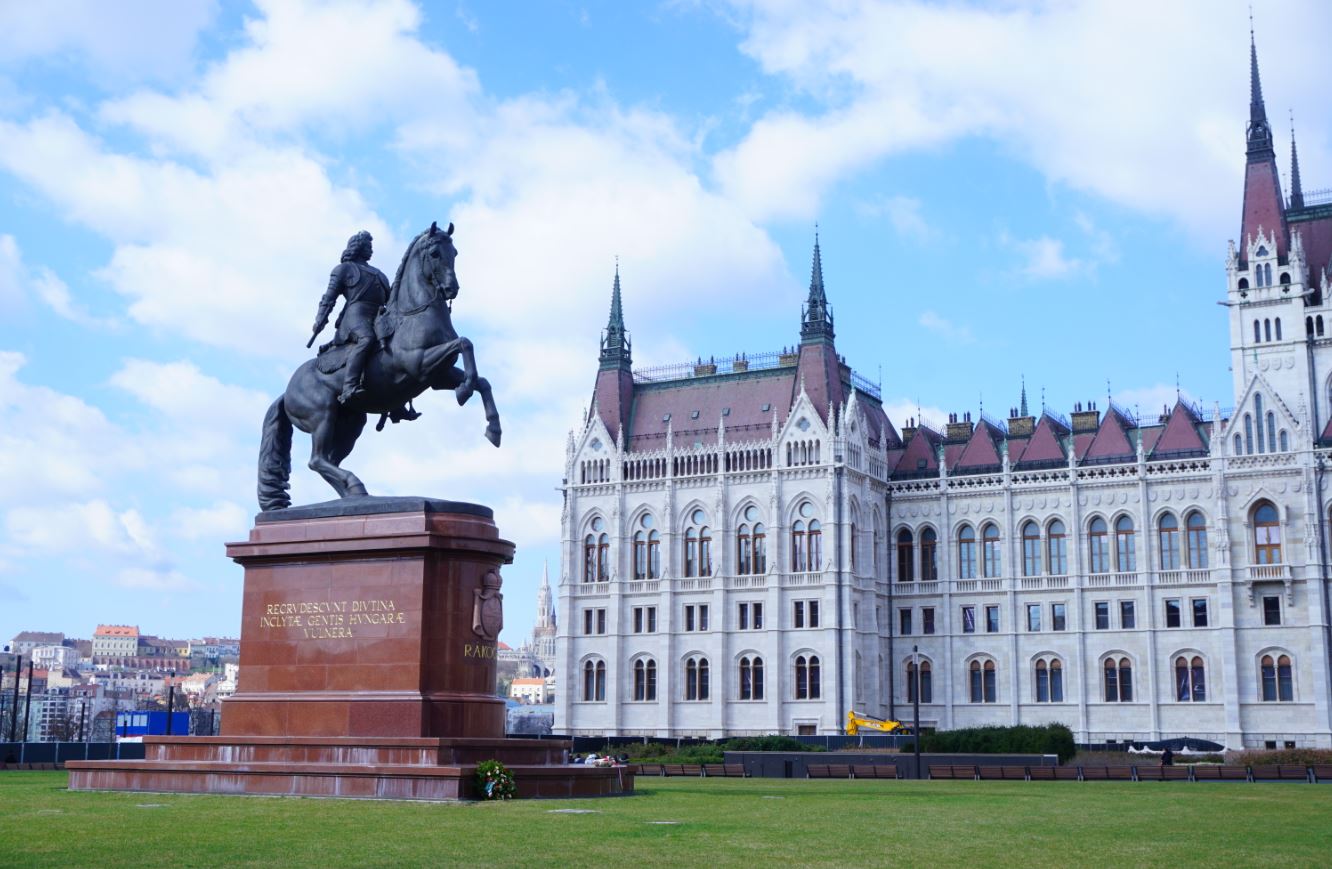 Parliament Building Side View
Parliament Building Side View
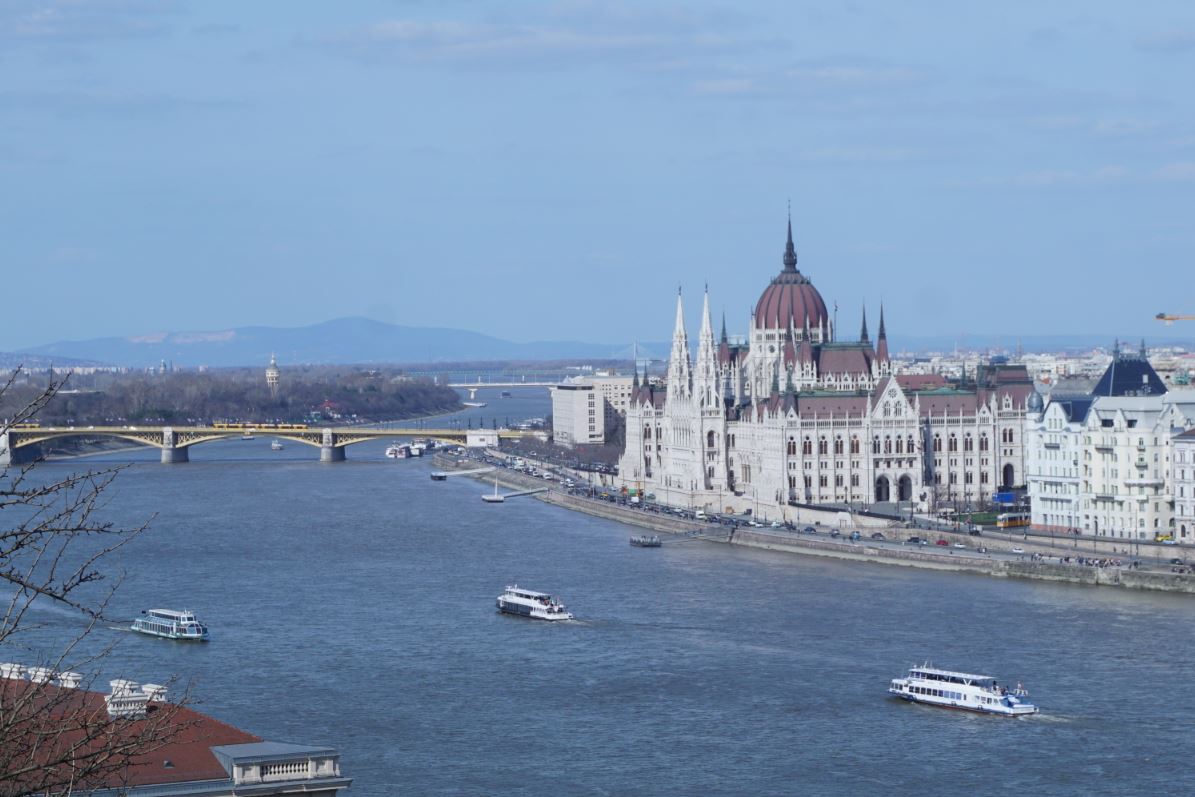 Parliament Building
Parliament Building
With its Gothic-style architecture, the Parliament building is the largest building in Hungary. At first glance, it may resemble a palace more than a typical parliament building. It was constructed to commemorate the 1000-year anniversary of the formation of the Hungarian state. Don’t miss the opportunity to take a tour and explore the interior, but book your English-language tour well in advance as spots are limited.
Saint Stephen’s Basilica
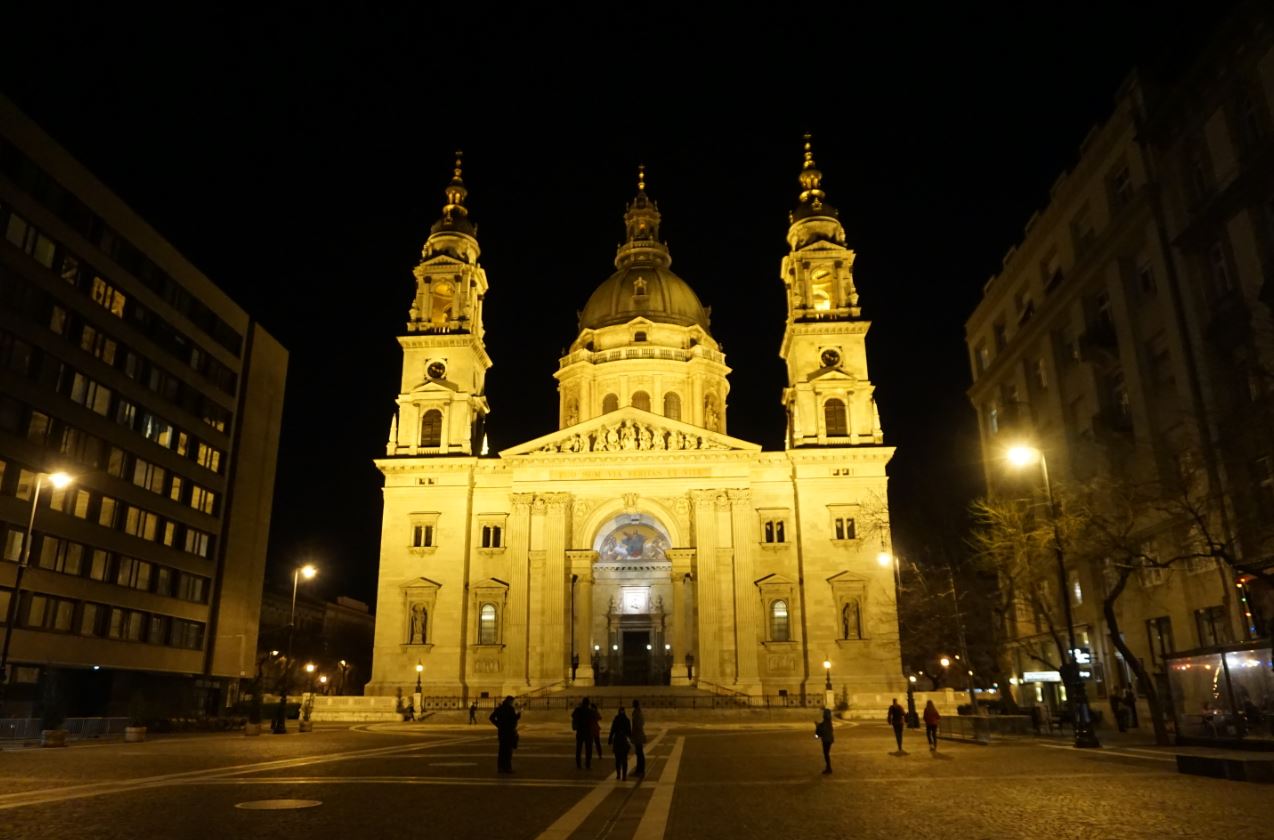 Saint Stephen’s Basilica at Night
Saint Stephen’s Basilica at Night
This building is named after Hungary’s first king, Stephen. Inside, you’ll find the mummified right hand of the king. The basilica stands out due to its considerable size compared to the surrounding buildings.
Freedom Square
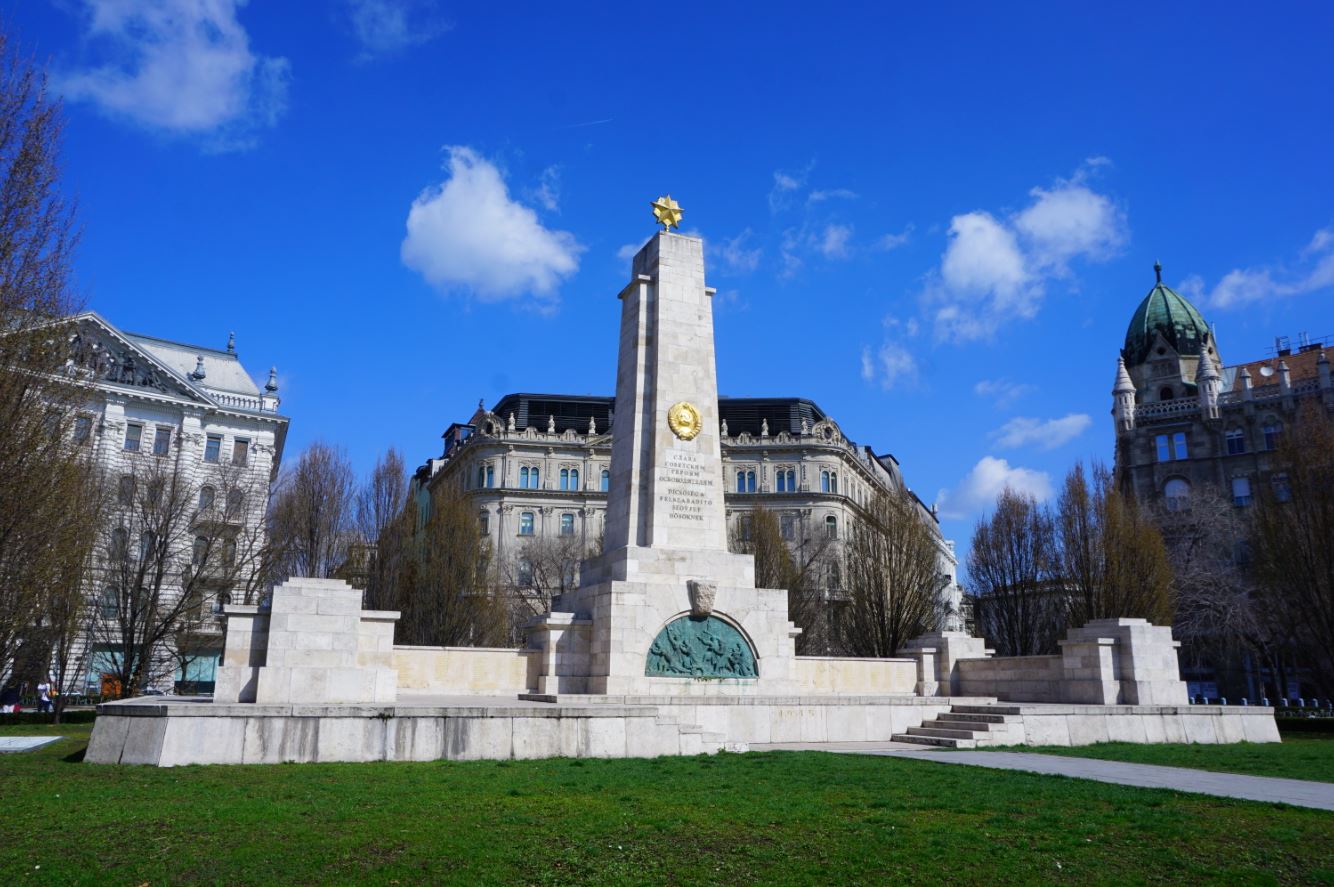 Soviet Monument in Freedom Square
Soviet Monument in Freedom Square
In this square, you’ll find a Soviet monument dedicated to the Soviet forces that liberated Hungary from Nazi occupation. It’s unique because, since becoming a democracy in 1989, many Soviet monuments were moved to the Memento Park, located outside Budapest.
3. Jewish Quarter
Attractions in this area:
- Dohány Street Synagogue
- Andrássy Avenue
Before World War II, 25% of Hungary’s population was Jewish. Unfortunately, due to the atrocities committed by the Nazis, around 600,000 Hungarian Jews lost their lives. This area still retains many aspects of Hungarian Jewish culture.
Dohány Street Synagogue
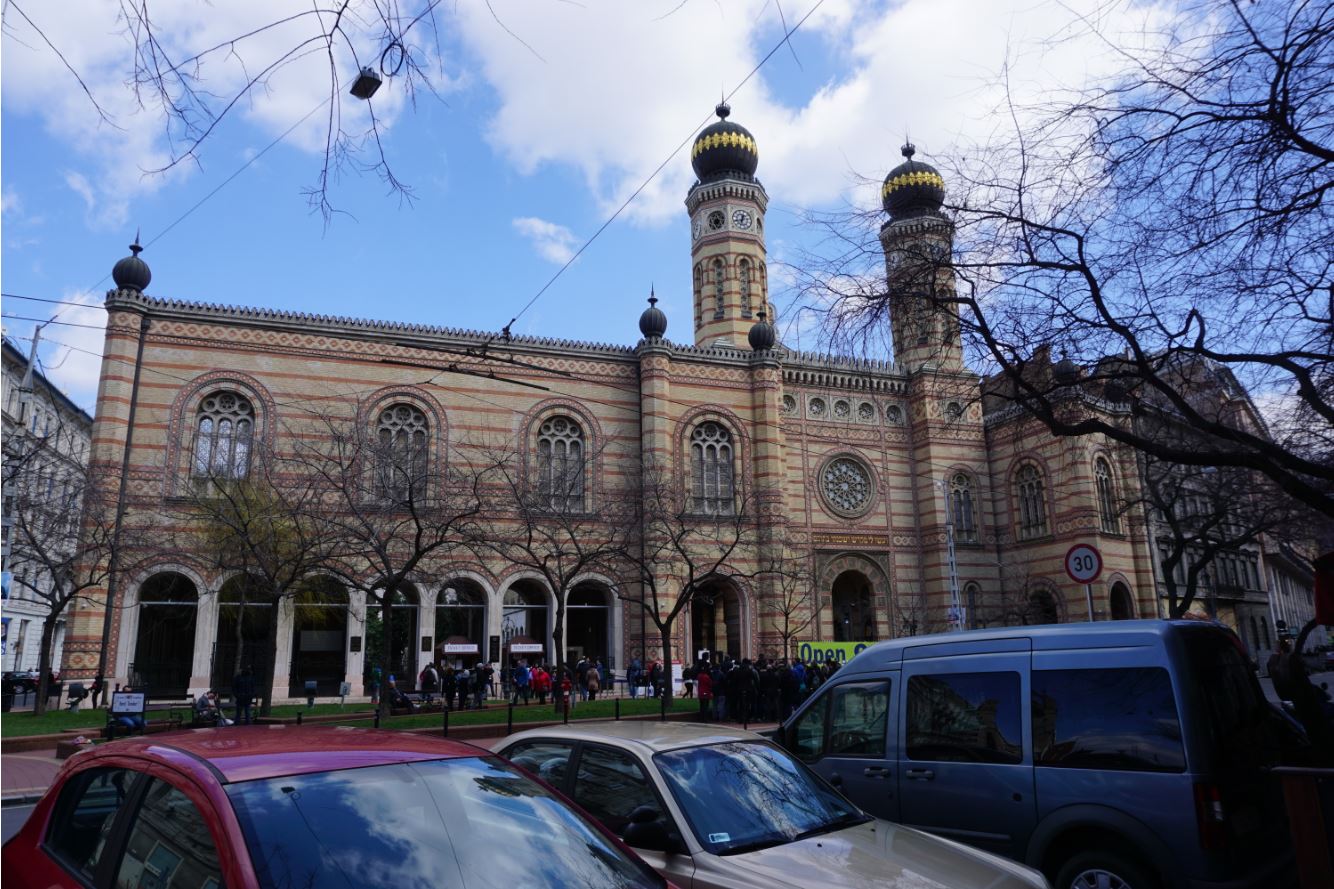 Dohány Street Synagogue
Dohány Street Synagogue
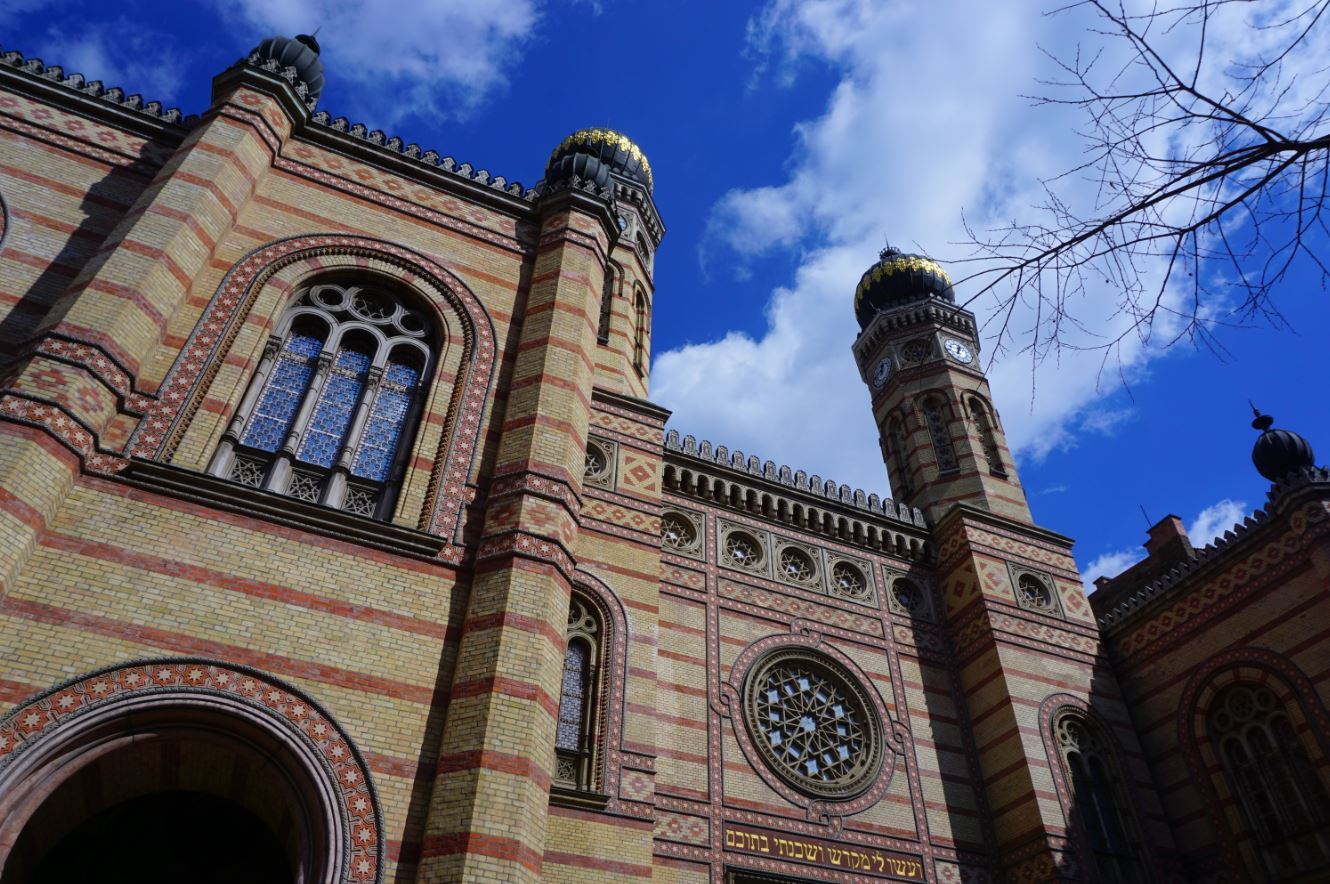 Dohány Street Synagogue
Dohány Street Synagogue
The synagogue is a place of Jewish religious worship, and this building is the largest synagogue in Europe and the second-largest in the world. When you enter the building, you’ll be given a yarmulke (skullcap) to wear, and you are not allowed to bring food into the area. It also houses the Jewish Heritage Museum.
Andrássy Avenue
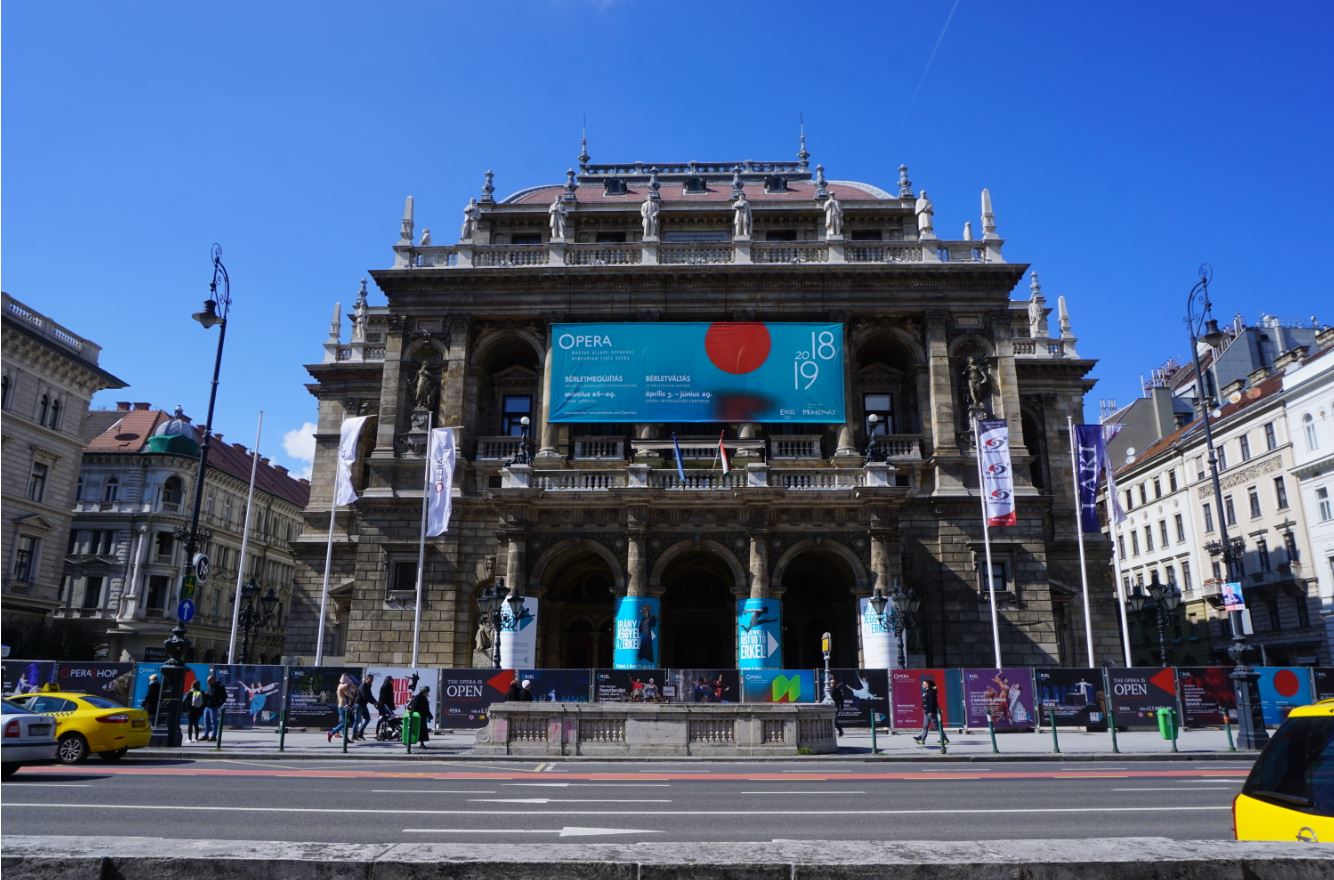 Hungarian State Opera
Hungarian State Opera
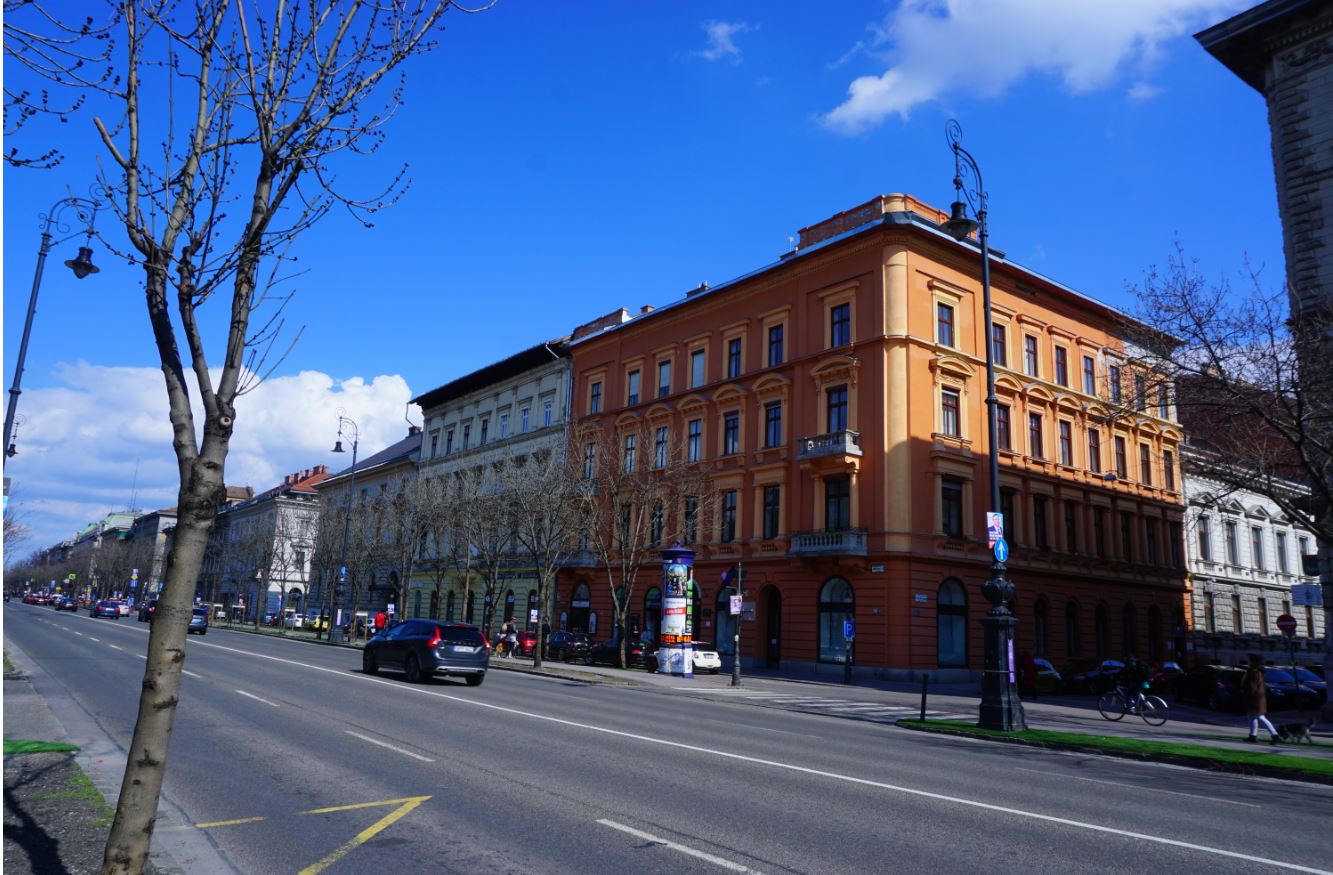 Andrássy Avenue
Andrássy Avenue
Andrássy Avenue is a grand boulevard in Budapest, lined with significant buildings on both sides. Along this avenue, you’ll find the Hungarian State Opera, House of Terror Museum, and Heroes Square. If you decide to walk from the city center to Heroes Square along this avenue, you’ll be treated to the Neo-Renaissance buildings on either side.
4. City Park
Attractions in this area:
- Heroes’ Square
- Széchenyi Medicinal Baths
- Vajdahunyadvár Castle
This city park in Budapest offers everything you need, including a zoo, a castle, thermal baths, a lake, and even an amusement park.
Heroes’ Square
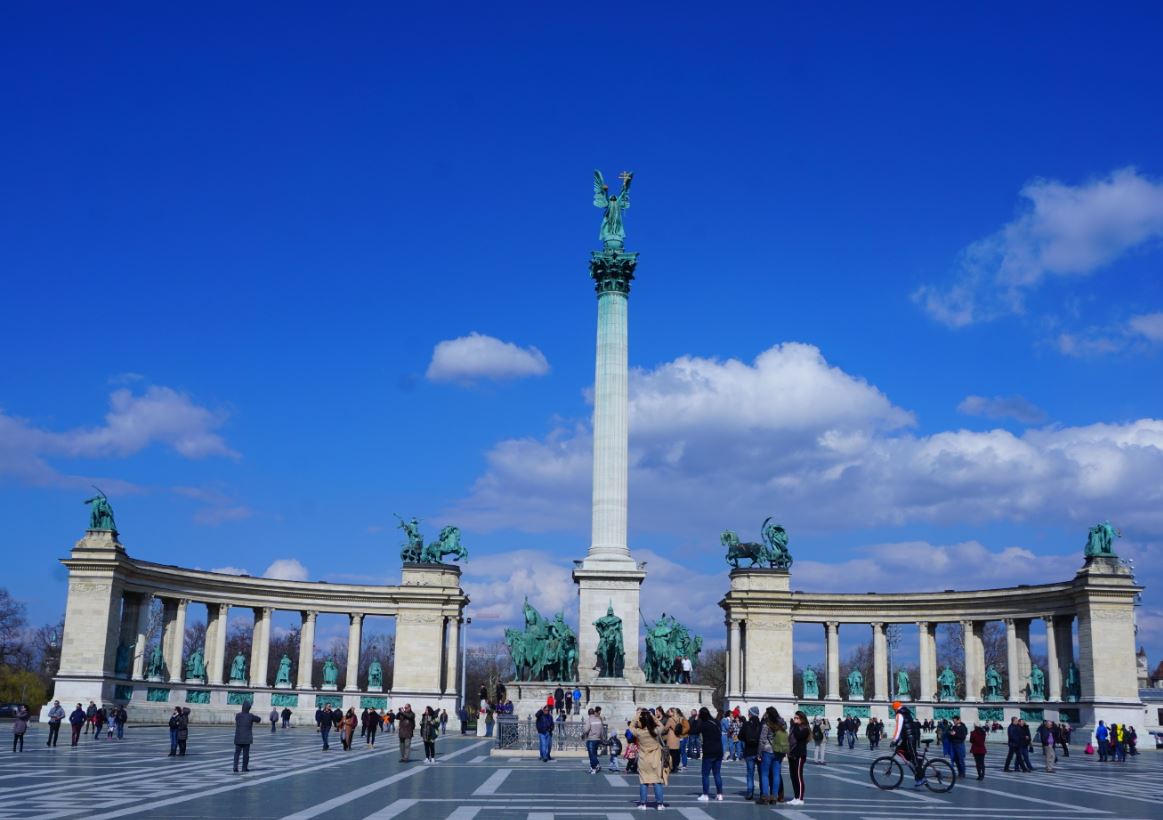 Heroes’ Square
Heroes’ Square
At the park’s entrance, you’ll be greeted by a large square with the Millennium Memorial in the center. The square is dedicated to Hungary’s heroes who fought for the nation’s independence. On both sides of Heroes Square, you’ll find the Museum of Contemporary Art and the Museum of Fine Arts.
Széchenyi Medicinal Baths
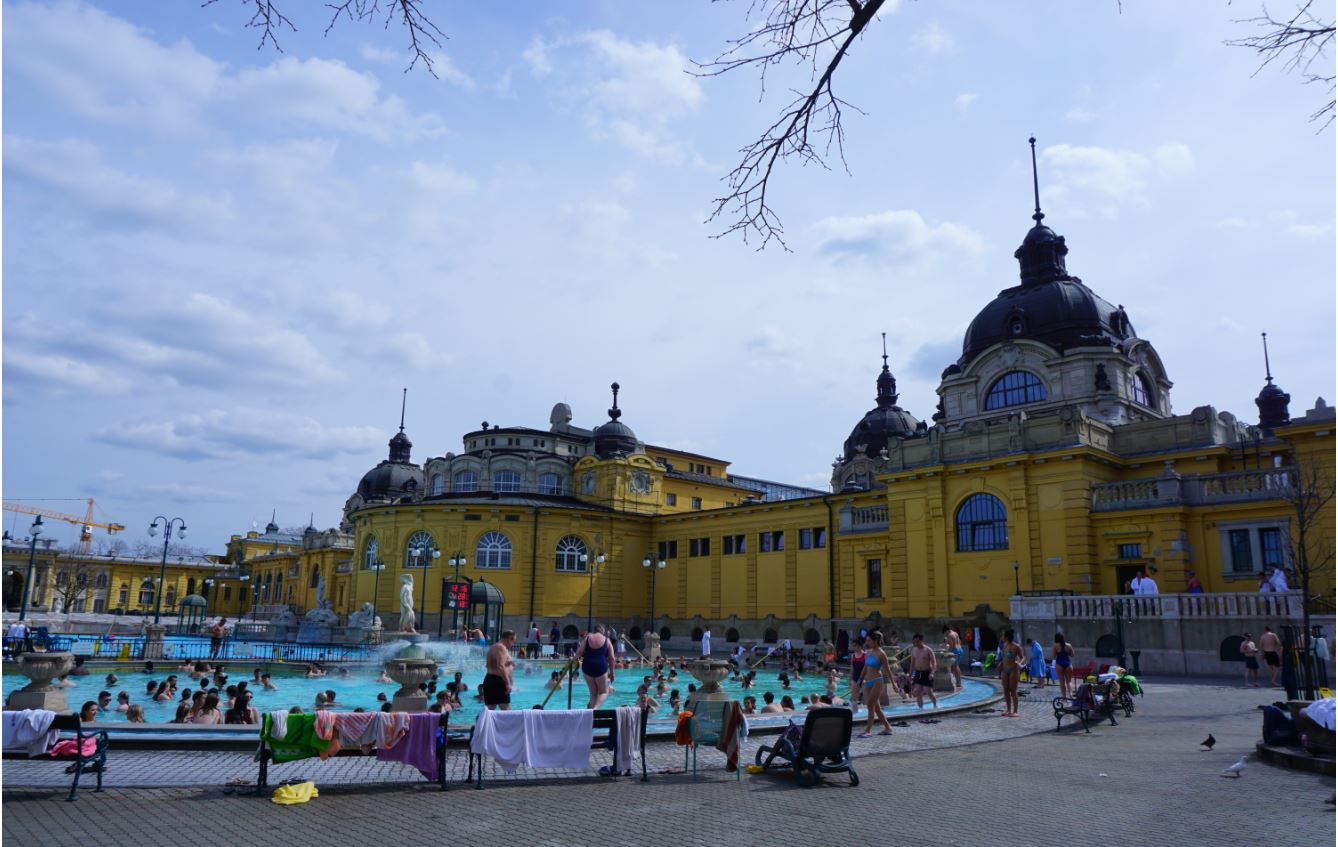 Széchenyi Medicinal Baths
Széchenyi Medicinal Baths
These thermal baths were the first public baths to open in Budapest in the late 1800s. When you enter the building, you’ll find two large open-air thermal baths, but many visitors forget that there are more pools inside the building. There are approximately 15 different temperature pools inside, along with various types of saunas, so don’t just settle for the open-air thermal baths.
Vajdahunyadvár Castle
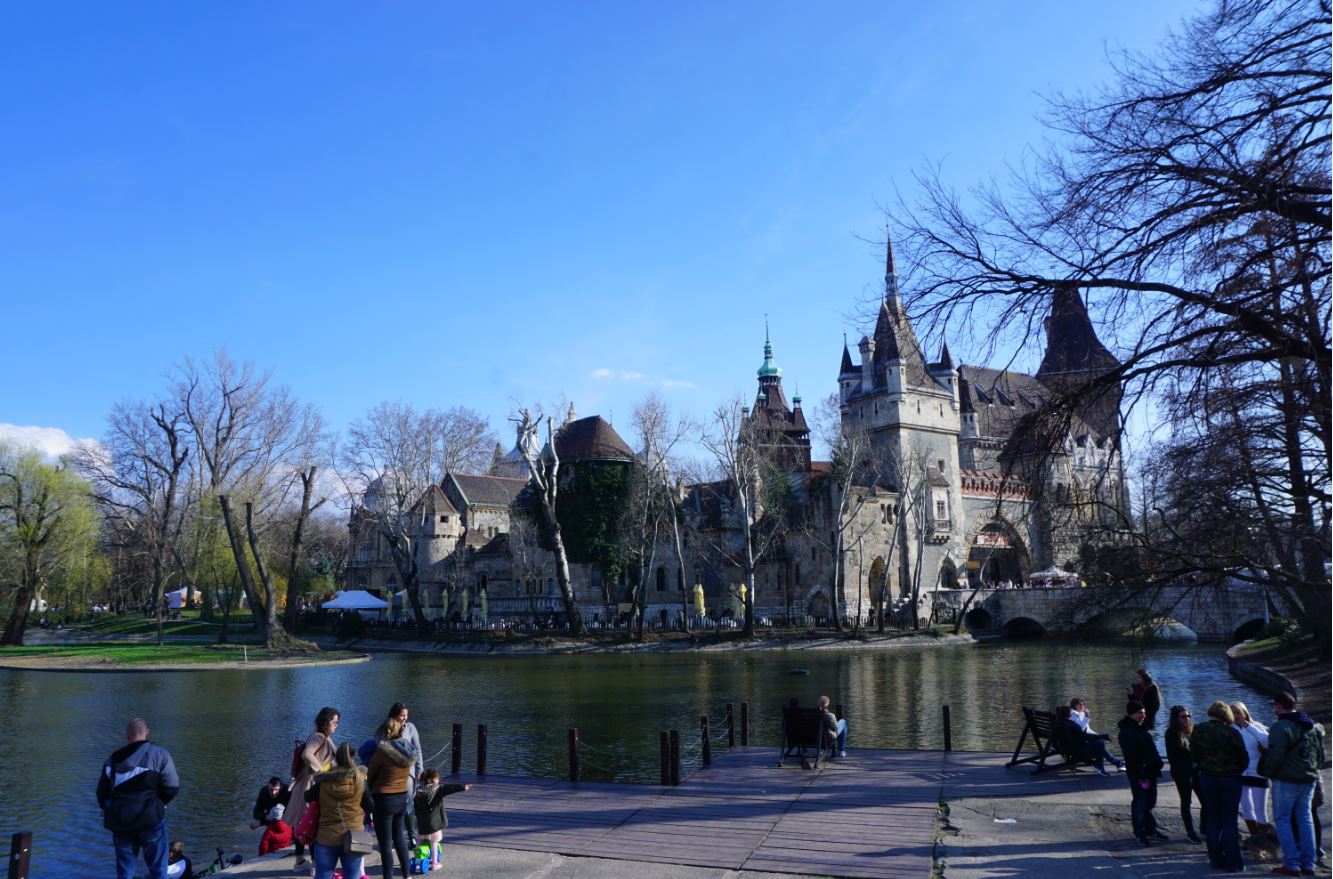 Vajdahunyadvár Castle
Vajdahunyadvár Castle
The castle in the city park was built in 1896 to celebrate the World Expo. It’s quite rare to find a castle in the middle of a city, and this one was inspired by the Transylvanian Hunyad Castle.
5. Gellért Hill
Attractions in this area:
- Citadella
- Liberation Monument
Apart from the Castle District, there’s another high point you can visit to see Budapest from a different perspective, and that’s Gellért Hill. Be prepared for a bit of a hike; you’ll climb many steps to reach the hill’s peak. This hill is also great for capturing photos of Buda Royal Palace at night.
Citadella
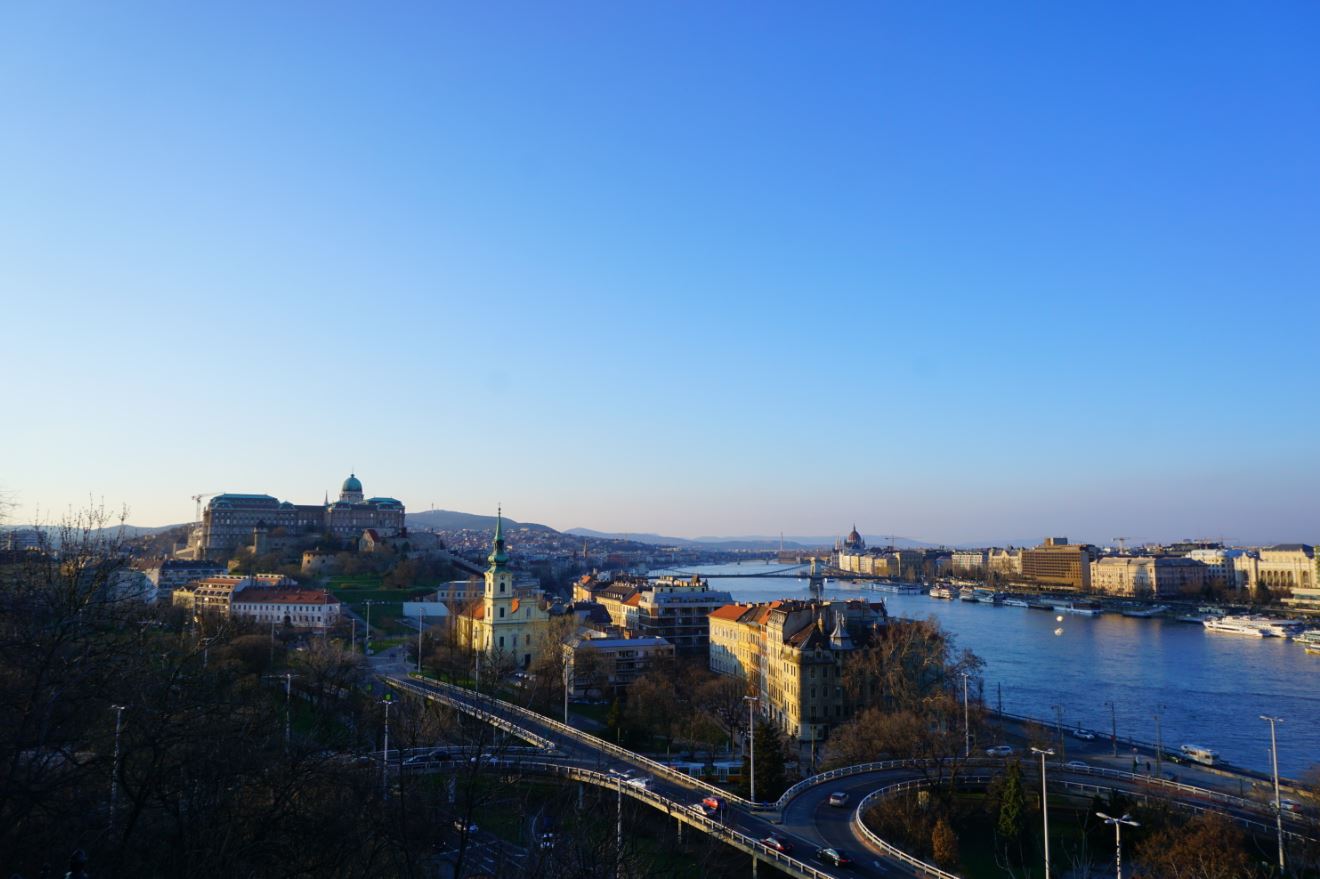 View from Citadella
View from Citadella
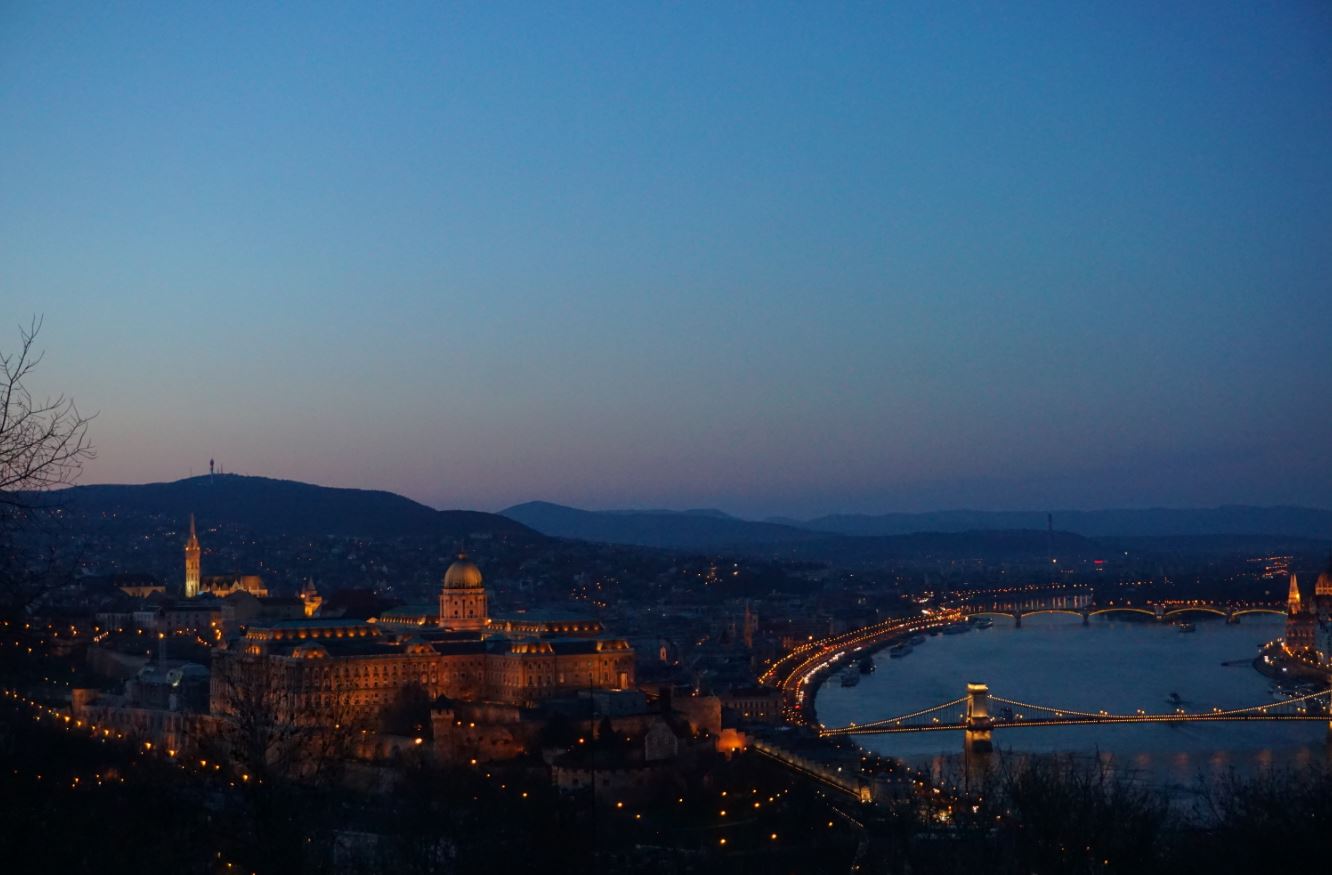 Budapest View from Citadella at Night
Budapest View from Citadella at Night
In 1854, during the Hapsburg Dynasty, this location was built as a defensive fortress to suppress Hungarian people who wanted to overthrow the Hapsburg dynasty from Austria. Many cannons were positioned towards Buda and Pest. During World War II, this fortress played a vital role and was contested by Nazi and Soviet forces in their battle for Budapest.
Liberation Monument
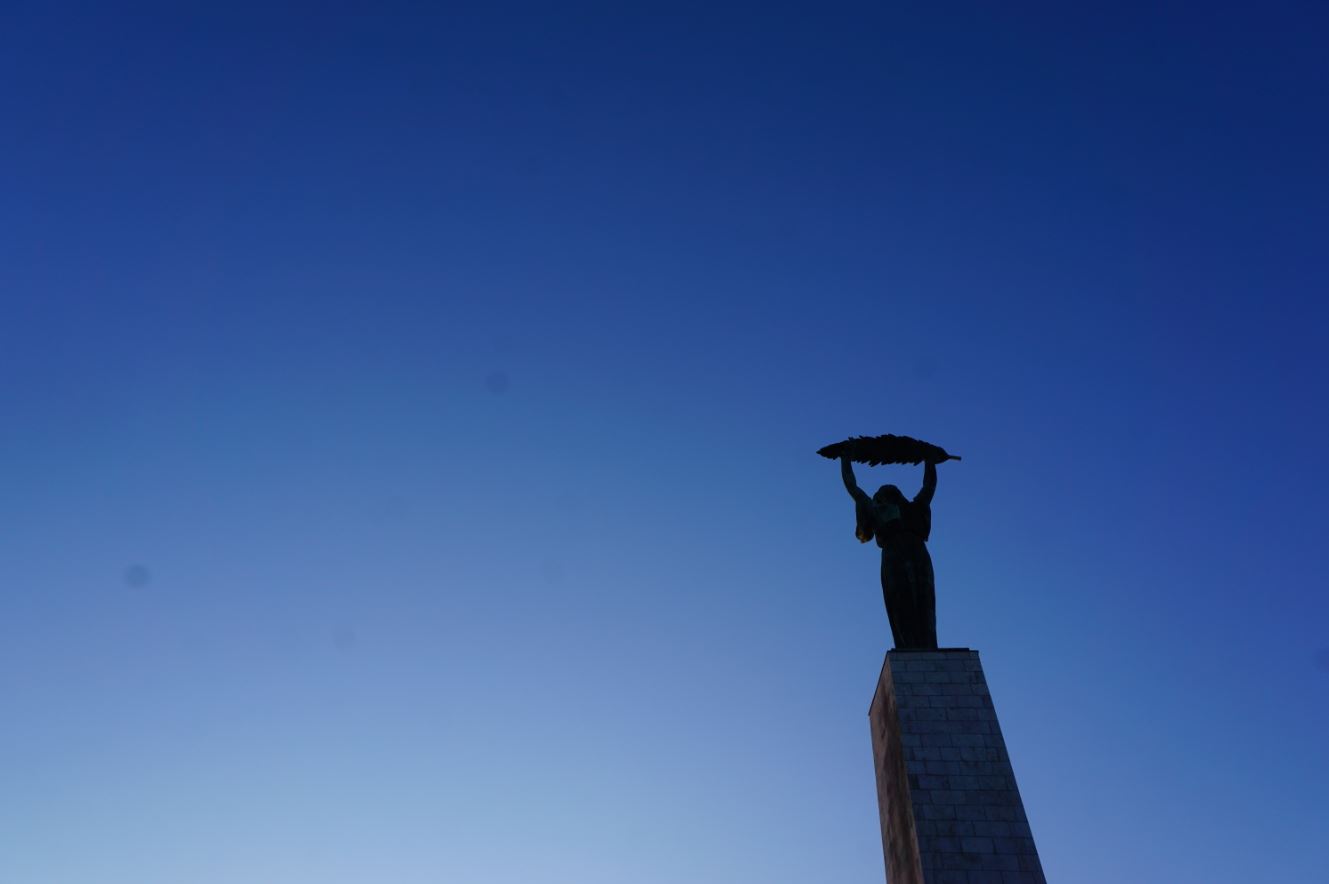 Liberation Monument
Liberation Monument
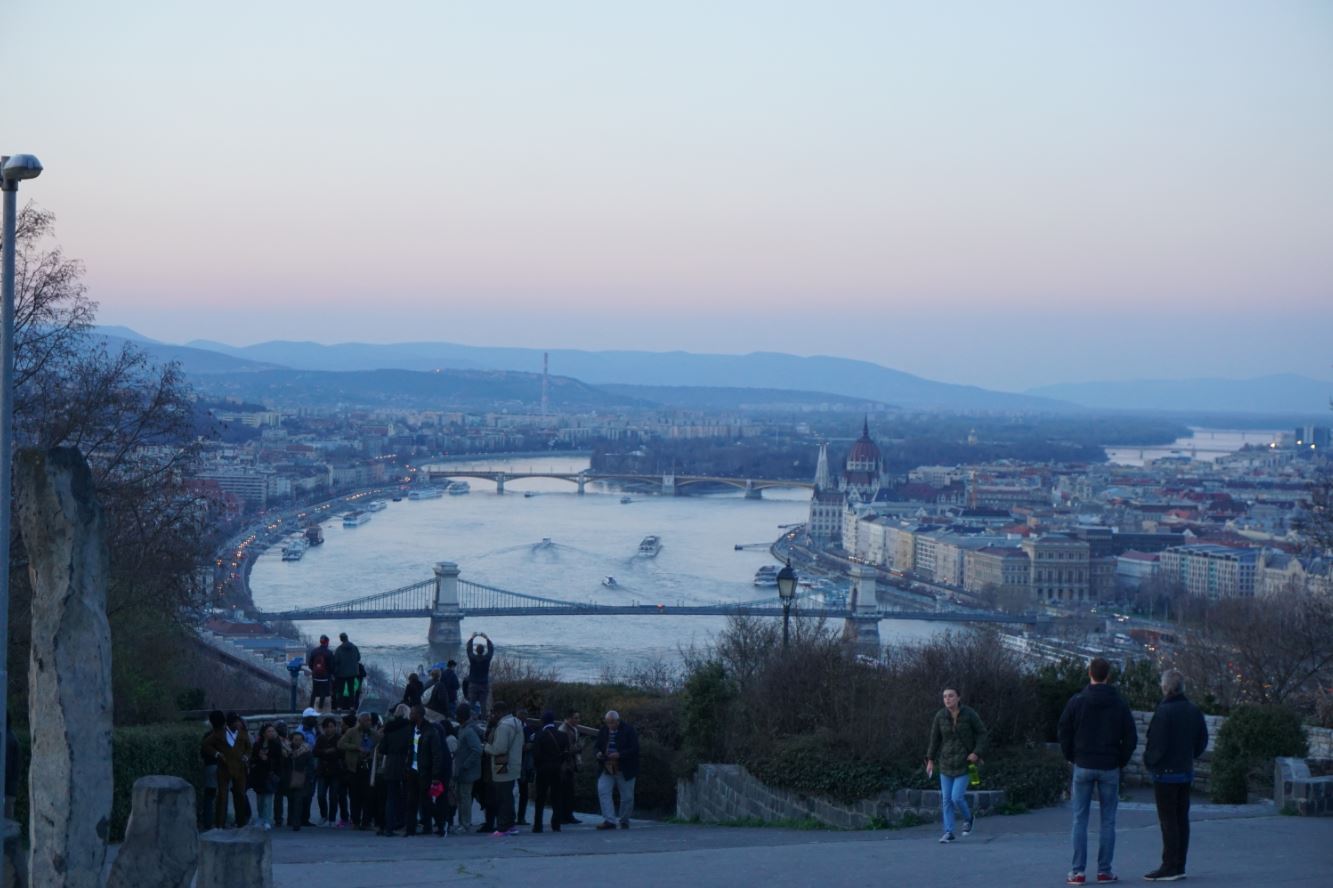 View from the Top of Liberation Monument
View from the Top of Liberation Monument
At the top of the hill, there’s a Liberation Monument commemorating Hungary’s liberation from the Nazis by Soviet forces. Just like Freedom Square, many Soviet-era monuments have been moved to Monument Park, and only the Liberation Monument remains at the hill’s summit.
comments powered by Disqus